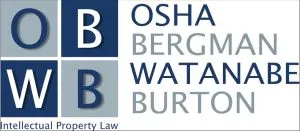- within Intellectual Property topic(s)
- with readers working within the Retail & Leisure industries
The USPTO announced the launch of Artificial Intelligence Search Automated Pilot (ASAP!) that began on October 20, 2025. With a stated goal of testing the efficacy of the USPTO's new Artificial Intelligence (AI) tools, the USPTO is providing an opportunity for an automated AI search to be conducted and Automated Search Results Notice (ASRN) to be provided to applicants who petition to participate in the program. The stated goal of the pilot is to ascertain the impact of sharing the ASRN (pre-examination) on prosecution by applicants, evaluate the scalability of generating ASRNs, and collect data to inform the USPTO's next steps, such as through a survey of participants as to the usefulness of the ASRN in assessing patentability early in the examination process.
The pilot is limited to original utility applications filed between October 20, 2025, and April 20, 2026, and excludes continuing and national stage applications. The USPTO plans to accept at least 1,600 applications into the pilot, with a goal of having at least 200 applications in each Technology Center. Some flexibility in the number of applications accepted is envisioned to allow the USPTO to adequately assess the program. The program is intended to run until April 20, 2026, but it could be terminated early if participation in some Technology Centers significantly exceeds 200. Participants must petition to participate in the program and pay the corresponding petition fee of $450 (with 60% and 80% discounts for small and micro entities, respectively).
Upon acceptance into the pilot, the automated search will be conducted by an internal AI tool that uses the application's classification under the Cooperative Patent Classification system and application contents as contextual information in its search of U.S. and foreign patent documents. Documents will be ranked by relevance, and the USPTO will mail an ASRN containing up to 10 documents listed in descending order by relevance. The automated search will occur after application pre-processing but before examination on the merits has begun. When examination does begin, examiners are to consider the ASRN documents in the same manner as other documents in the application file when they conduct their normal search. Unless the results are relied upon by the Examiner in a rejection, they are not required to be identified on the List of References Cited by the Examiner. Nor is there a requirement that the applicant submits the documents in an IDS unless the applicant would like the documents to appear on the face of any patent that issues.
Upon an applicant's receipt of the ASRN, there are a few options an applicant might consider for the applications before it goes through the examiner's examination. First, and most likely path for some applicants, is consideration of potential amendments to proactively differentiate the claims from the references identified in the ASRN. This may allow for a more compact and efficient prosecution, which may be interesting for applicants who desire a quick issuance and avoidance of fees such for an RCE. Second, if applicants deem the art extremely relevant with minimal chance of success for patentability of any claim scope, an applicant can expressly abandon an application and obtain a refund of the application search fee (~38% of regular application fees) and excess claim fees. Third, if additional time is needed to evaluate claim scope, potential collection of evidence to support patentability (such as through a declaration), or even express abandonment, an applicant can file a request for deferral of examination for up to 3 years (which comes at the penalty of a $150 petition fee and loss of PTA due to applicant delay).
Given the limitations on what an applicant can do with the ASRN in the application, applicants who participate in the pilot may choose to do so in an effort to support the USPTO in their effort to modernize the search process through the use of an AI tool. There is, however, a path for applicants to make more meaningful adjustments if the original utility application is the first filing (i.e., priority filing). While applicants do not have an opportunity to amend the specification after the issuance of the ASRN, such applicants could consider the results of the ASRN and adjust a subsequent PCT specification claiming priority to the original utility filing on the basis of the ASRN results and reenter the United States through a national stage filing.
The content of this article is intended to provide a general guide to the subject matter. Specialist advice should be sought about your specific circumstances.
[View Source]

